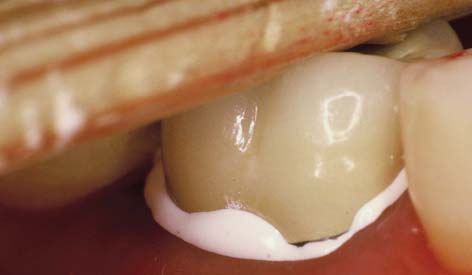A coaching institution for ADC, ORE and Government dental job examinations.
Oral Malodour / Foetor / Bad Breath / Halitosis
Basic Reason of Fear in a Four Years Old Child Who is Aggressive in Dental Office
The quality of dental treatment of a child depends on one's cooperation and repo with a dentist in the treatment room. How a dentist manages a child depending upon the understanding the child's behaviour pattern.
There are certain guidelines that are useful in helping a child to show a positive & compliant behaviour while getting the dental treatment. These guidelines have been prepared from the findings and principles of behavioural dentistry, behavioural psychology, developmental psychology, and paediatric psychology.
Can Alginate Be Used As Muco-Compressive Impression Material?
The
alginate impression material cannot be used as muco-compressive material. This
material does not have consistency enough to apply pressure on mucosa.
Therefore, muco-compressive impressions cannot be taken by alginate.
The muco-compressive impression can only be taken by impression compound or heavy duty (putty) rubber base impression materials as they both have thick consistency.
What is best during placement of Crown?

The placement of crown is an important step in the longevity of the crown and the comfort of the patient. There are certain points that should be taken into consideration by a dentist during placement i.e. cementation.
The gingival margins should not be inflamed at the time of crown cementation. This may happen due to gingivoplasty or crown lengthening. For a common man, it means, the gum margins of the tooth receiving the artificial crown should not have redness, swelling or puffiness. If there is any, better to wait till it subsides.
The choice of cement/luting agent should be decided based on the type and material of the crown. The available materials are Zinc phosphate, Glass ionomer, Polycarbonate, Zinc silicophosphate, and resin luting agents. The anterior crowns need different cementing material than that of posterior crowns. The all ceramic crowns are best cemented by resin luting agents, but the use is limited to the cementation of anterior crowns. The reason is, after cementation, it becomes extremely difficult to remove set resin from the interproximal area of posterior teeth. Rest luting materials are brittle enough to break and remove, therefore, they can be used in all areas-anterior as well as posterior.
1. ADC Examination: Initial Assessment Process Explained
The dentist who has got his or her bachelor dental degree from a non-Australian institution needs to pass the skill assessment test/examination conducted by the Australian Dental Council and register themselves in Dental Board of Australia to practice as a general dentist in Australia or to get a job in public or private sector.
The ADC test/examination is a screening examination to establish that dentists trained in dental schools which have not been formally reviewed and accredited by the ADC have the necessary knowledge and clinical competence to practice dentistry.
Following are the steps, an overseas dentist needs to go through to qualify the ADC examination:
